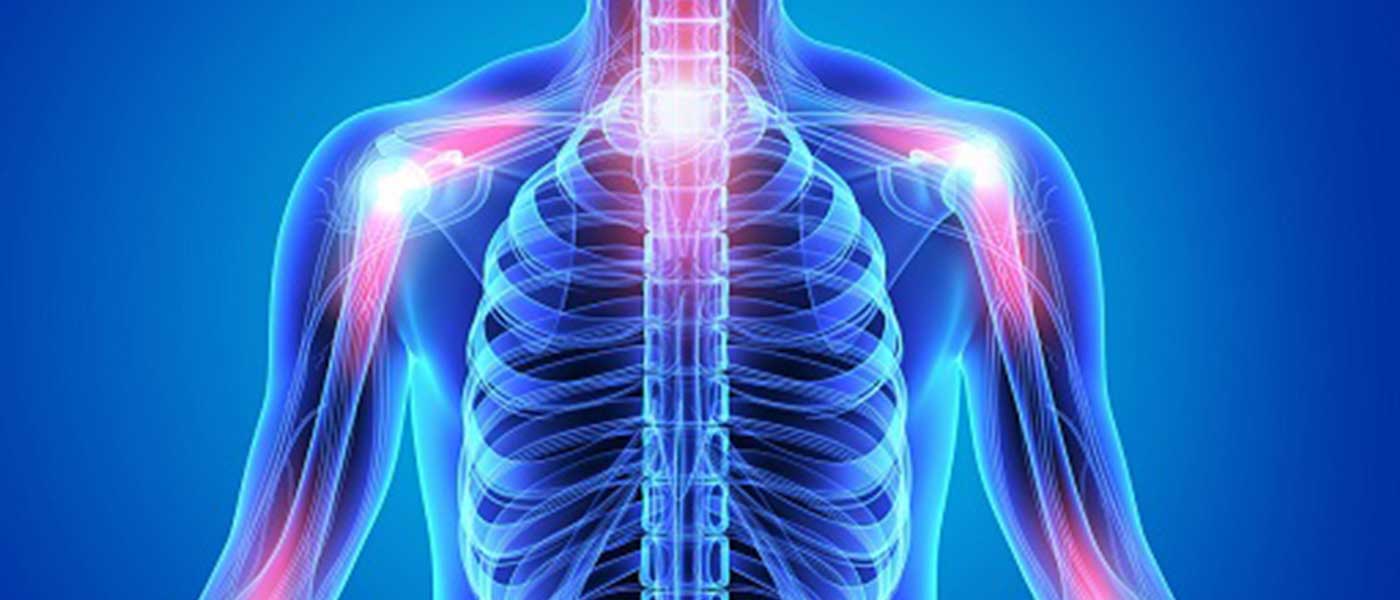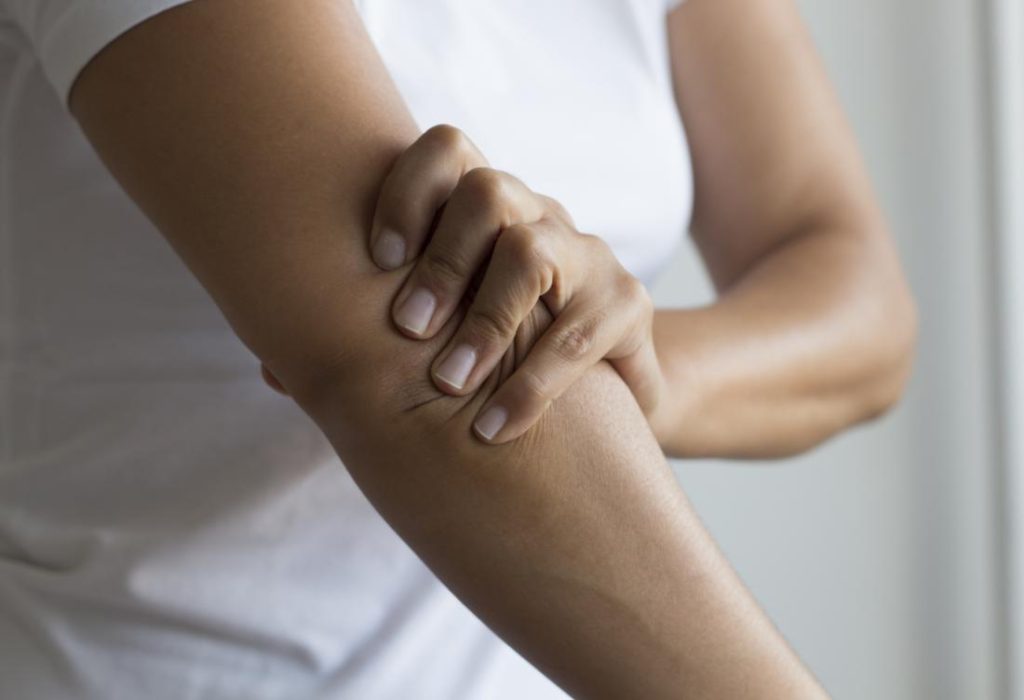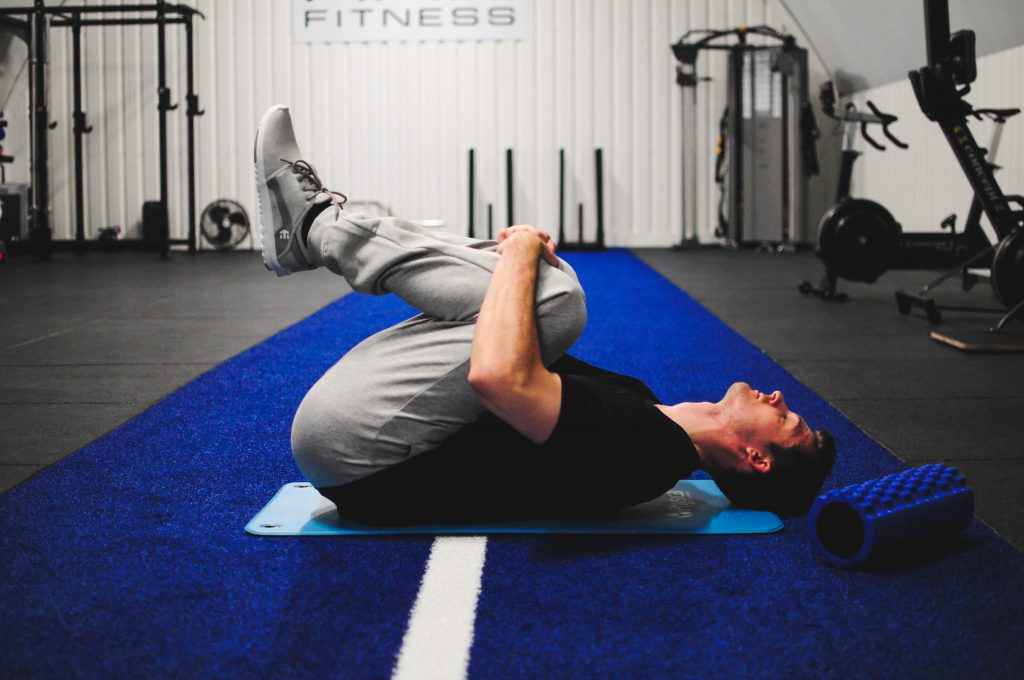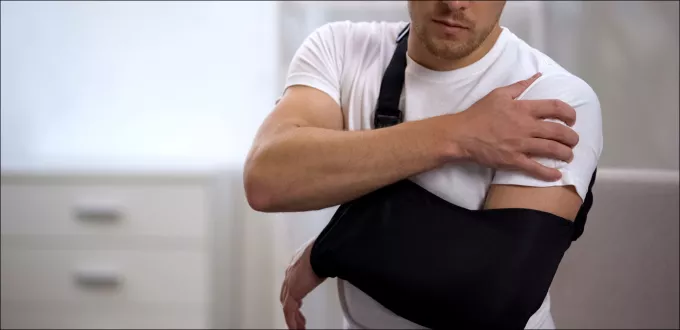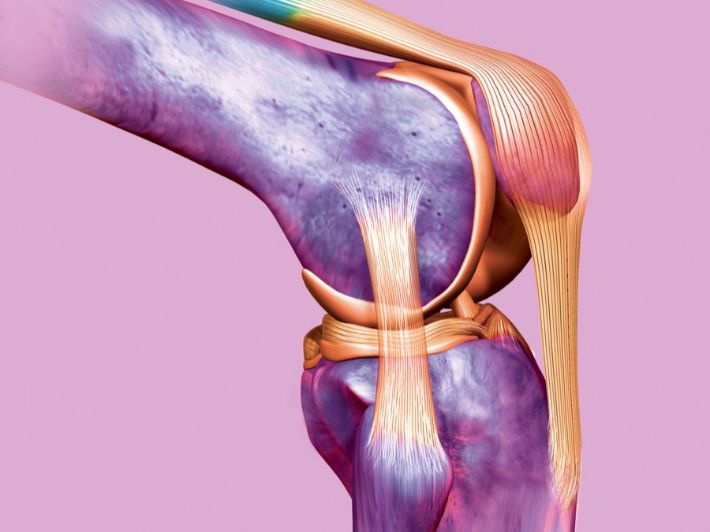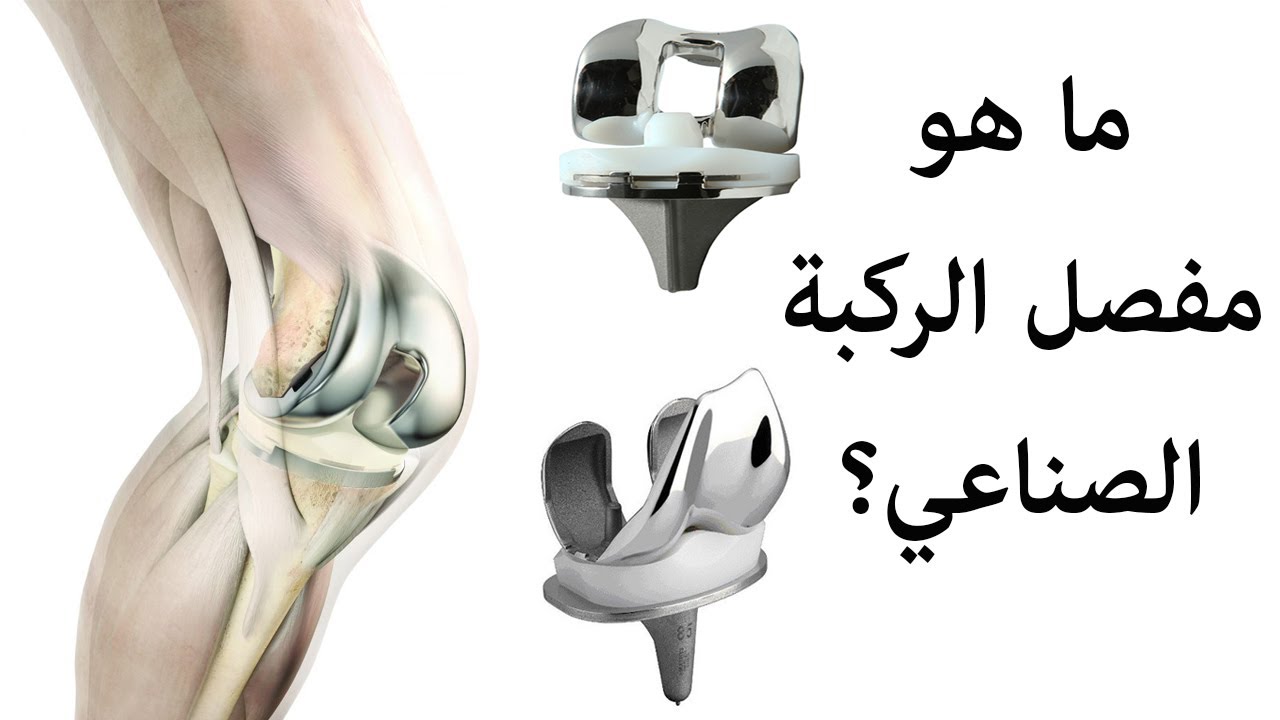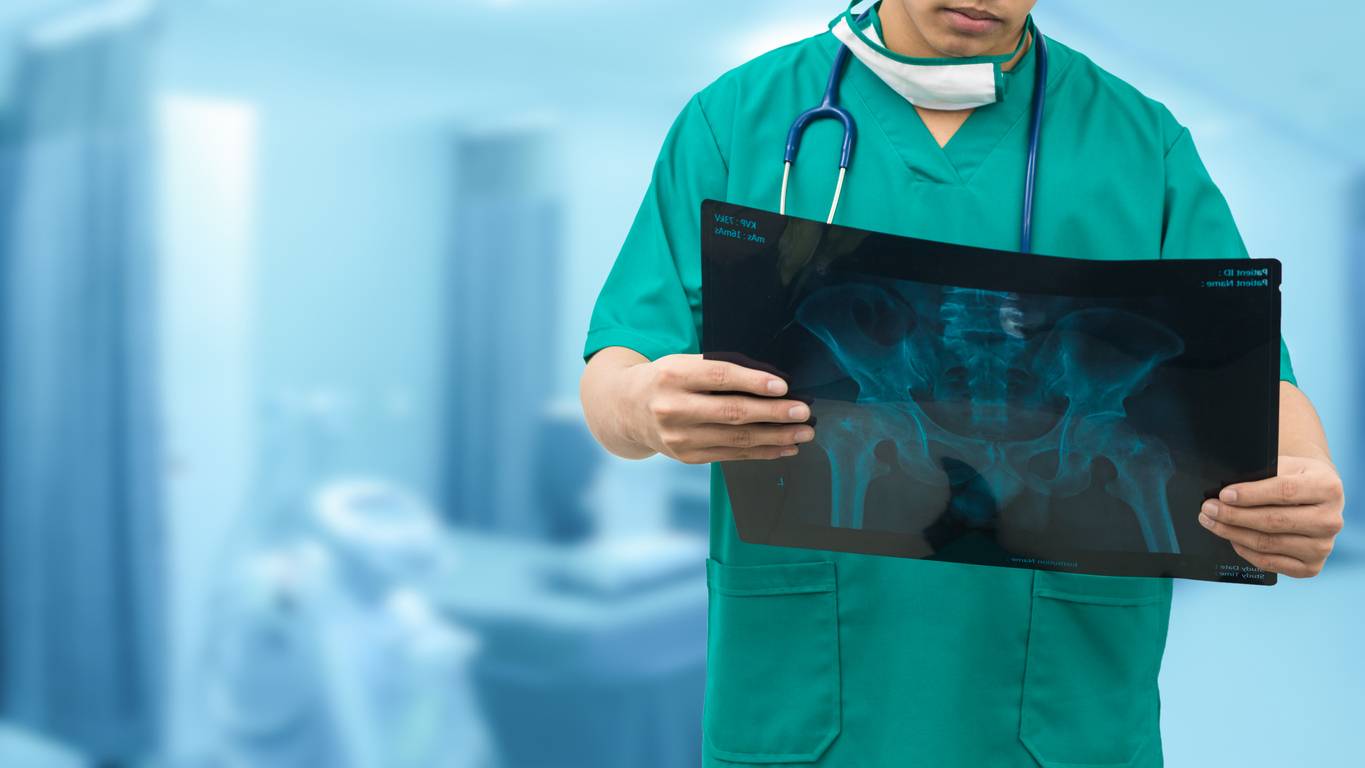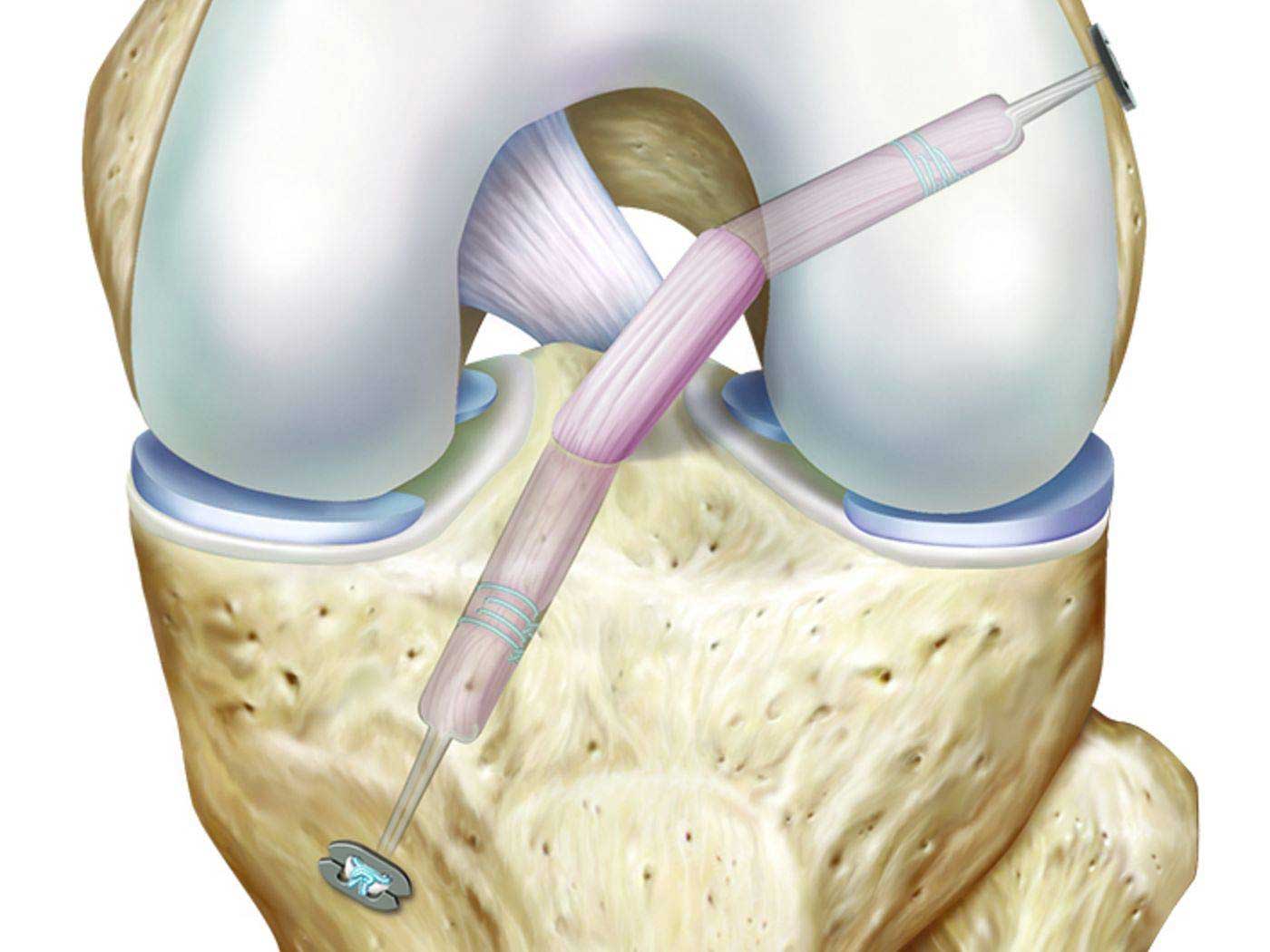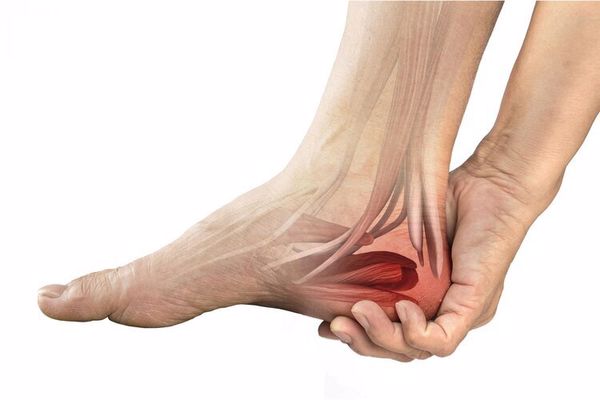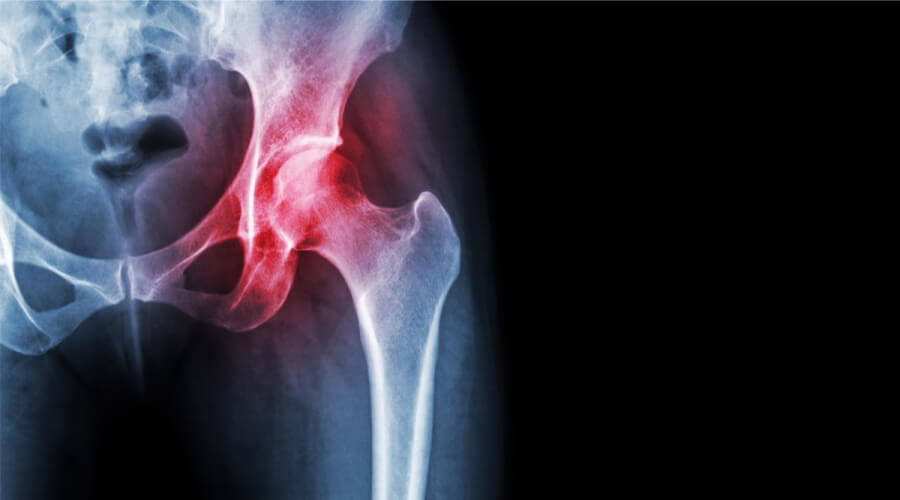
Symptoms of a Herniated Disc in the Shoulder
A herniated disc in the shoulder is a condition that affects the shoulder joint, causing many problems and disturbing symptoms. Herniation occurs when the shoulder cartilage moves out of its normal position, leading to inflammation and pain in the joint. In this article, we will explore the most prominent symptoms that may indicate the presence of a herniated disc in the shoulder.
- Sharp and persistent pain: One of the most noticeable symptoms that accompany a herniated disc in the shoulder is pain. The pain can be sharp and persistent and may increase with arm movement or when trying to lift or move objects. The pain may be relieved by rest and avoiding movements that cause pain, but it returns again when resuming physical activity.
- Limited shoulder movement: Limited movement of the shoulder is a common symptom of a herniated disc. The affected person may find it difficult to move the shoulder fully, which restricts their movement and decreases their ability to perform daily activities. Often, reduced movement indicates inflammation and herniated disc in the joint.
- Swelling and redness: A person with a herniated disc in the shoulder may experience swelling and redness in the affected joint. This swelling may be temporary at times and may persist for longer periods in other cases. Swelling and redness are usually attributed to inflammation of the joint due to the herniated disc.
- “Cracking” or “popping” sound: A herniated disc in the shoulder may be accompanied by a sound resembling a crack or pop when moving the shoulder. This abnormal sound can be the result of the contact of the affected tissues in the joint during movement. This sound may be accompanied by a feeling of sharpness or discomfort in the joint.
- Shoulder Muscle Weakness: The patient may experience weakness in the muscles of the affected shoulder. The condition of disc herniation can impact the person’s ability to use and move their arm correctly, leading to weakness in the shoulder muscles. This muscle weakness can affect the level of skill and strength in arm movement.
- Numbness and Tingling: In some cases, a person with a herniated disc in the shoulder may suffer from numbness and tingling in the affected arm. This sensation is often attributed to the disc pressing on surrounding nerves, causing a disruption in nerve signals and the onset of numbness and tingling.
Before concluding, it’s important to mention that these symptoms may be similar to those of other shoulder-related conditions, so a precise medical examination is necessary to determine the accurate diagnosis and appropriate next steps for treatment.
In the end, if you have any of these symptoms mentioned in this article, it’s crucial to consult a specialist for an accurate diagnosis and appropriate treatment. Recommendations may include resting the shoulder and avoiding painful movements, alongside medical treatment which could involve physical therapy, anti-inflammatory medications, and rehabilitation exercises.
How to know if you are suffering from a herniated disc?
A herniated disc is a condition that can affect the spine, meaning an excessive displacement of disc material between the vertebrae, which can lead to pressure on the surrounding nerves and cause severe pain and discomfort. It might be challenging to recognize the occurrence of a herniated disc in its early stages, but there are some symptoms that may indicate its presence. Let’s review some of these symptoms:
- Persistent Pain: The patient may feel pain extending from the waist area down to the leg, especially if the herniation is in the lumbar area at the lower back. The pain can vary in intensity and frequency and may increase during walking or when bending the body.
- Pins and Needles: The patient may experience a sensation of pins and needles in the leg or foot area. This feeling can be transient and painful, and it may worsen with body movement or when sitting for long periods.
- General Muscle Weakness: A herniated disc may be accompanied by general muscle weakness in the leg muscles, making it difficult to carry out daily activities easily. This weakness can lead to instability while walking or painful muscle spasms.
- Difficulties when trying to stand or sit: The patient may feel difficulty and pain when trying to stand or sit for extended periods. The pain can increase with changes in body posture, and the patient may need to rest for short periods between sustained activities.
- Sharp and Sudden Pain during Certain Movements: A person with a herniated disc may suffer from sharp and sudden pain when attempting certain movements, such as kneeling, bending, or heavy lifting. The pain can increase with improper body stretching.
- Coldness on one side of the body: In some cases, a person with a herniated disc may experience a disturbance in blood circulation, causing coldness on the affected side of the body. This coldness may be accompanied by weakness and numbness in the affected area.
If you notice any of these symptoms, it may be advisable to consult a doctor for an accurate diagnosis and appropriate treatment. Treatment may include pain management, physical therapy, and in some more severe cases, surgery may be suggested. Treatment should not be delayed, and a herniated disc should be addressed in its early stages to avoid potential complications.
Regular follow-ups with your doctor and following advice on maintaining spinal health can help reduce the likelihood of future disc herniation and improve the quality of your daily life. Listen to your body and do not ignore any symptoms that may indicate a problem with your spine.
Does a herniated disc cause arm pain?
“Does a herniated disc cause arm pain?” is a common question posed by many people who experience arm pain. A herniated disc can be one of the potential causes of this pain. In this article, we will explore the concept of disc herniation and how it can cause arm pain, as well as other possible symptoms, and methods of diagnosis and treatment.
What is a herniated disc?
A herniated disc is a condition that occurs when the cartilage of the disc between the spinal vertebrae is displaced. The spine contains a series of discs that act as shock absorbers to absorb pressure and enable flexible movement of the vertebrae. When these discs are damaged or inflamed, or pressure is applied to them, the cartilage within them can displace and press on the surrounding nerves.
How can a herniated disc cause arm pain?
When a disc herniates and presses on nerves in the spine, it can cause a variety of symptoms. One of these symptoms can be arm pain. The pain is usually intense, strong, and persistent, and can involve the entire arm or be confined to a specific area.
A herniated disc can cause pressure on the cervical nerve roots in the neck, which can lead to arm pain. It can also cause abnormal friction between vertebrae or damage to the joints, increasing the severity of arm pain.
Other symptoms accompanying arm pain, such as numbness, tingling, and pins and needles, may appear. This is due to the pressure of the cartilage on the nerves and its effect on their signals. These symptoms may be present in the arm itself or extend to the hand and fingers.
Diagnostic Methods
To determine whether a herniated disc is the cause behind arm pain, it is necessary to consult a specialist. The doctor will conduct a detailed medical history and evaluate your complaints and symptoms. This may require taking X-rays to diagnose the herniated disc, and additional imaging studies such as Magnetic Resonance Imaging (MRI) might also be conducted to determine the extent of damage and refine the diagnosis.
Treatment Options
There are several treatment options available for people suffering from arm pain due to a herniated disc. In mild to moderate cases, treatment may include pain relief medication and strengthening the muscles surrounding the spine through medical exercises, working on improving posture, and appropriately practicing physical exercises.
In more severe cases, the patient may require surgical intervention. The surgical procedure can involve removing the damaged or protruding part of the disc without removing the entire disc. This procedure aims to improve symptoms and restore spinal function.
In general, it is important to consult a specialist to determine the cause of arm pain and provide appropriate treatment. The magnitude and intensity of arm pain can vary from one person to another, depending on the degree of damage and pressure caused by the herniated disc.
In conclusion, a herniated disc can be one of the potential causes of arm pain. If you have persistent and severe arm pain, visiting a specialist will help in diagnosing the condition and developing a suitable treatment plan. Early diagnosis and appropriate treatment can improve symptoms and help restore normal daily functions.
Does cervical disc herniation cause shoulder pain?
Shoulder and neck pain are common symptoms that many people experience. When looking for the causes of these pains, the cervical disc could be one of the potential reasons. But can cervical disc herniation actually cause shoulder pain? In this article, we will explore this topic in detail.
The Nature of Cervical Discs:
- Before discussing the relationship between cervical discs and shoulder pain, it’s essential first to understand what these discs are. Cervical discs consist of a gel-like cushioning disc situated between two vertebrae in the cervical spine. The function of these discs is to distribute pressure across the cervical vertebrae and absorb shocks during movement. Damage to the cervical discs, such as herniation or slippage, can lead to pressure on surrounding nerves and consequently cause pain.
The Relationship Between Cervical Discs and Shoulder Pain:
- When cervical discs are damaged or under pressure, it can affect the nerves that run through the neck and extend to the shoulder. Consequently, this can lead to nerve irritation or herniation of cervical discs, resulting in shoulder pain.
- This pain typically includes symptoms such as sharp or chronic pain in the shoulder and neck, numbness in the arms, weakness in strength and motion, and an escalation of shoulder pain when moving or using it intensely.
Factors Increasing the Risk of Shoulder Pain Associated with Cervical Discs:
- Age progression: As we age, the fibers of cervical discs become less flexible and more prone to damage, increasing the risk of shoulder pain.
- Exposure to trauma or injuries: Accidents or sudden injuries in the neck area may damage the discs, leading to shoulder pain.
- Engaging in strenuous activities: Repetitive strenuous activities that put pressure on the neck and shoulders can lead to inflammatory disc conditions or herniation in the neck, causing shoulder pain.
Diagnosis and Treatment of Shoulder Pain Related to Cervical Discs:
- Since shoulder pain can arise from various causes, accurate diagnosis of the pain source is crucial. Patients should provide doctors with details about symptoms and changes felt in the shoulder and neck.
- Diagnosis may require a complete physical examination of the neck and shoulder, imaging tests such as X-rays or MRI to evaluate the condition of the cervical discs, and ensure symptoms are consistent with it.
- Regarding treatment, it depends on the severity of the pain and its impact on the patient’s life. Treatment may include applying hot compresses, using pain relievers to ease the pain, wearing a neck brace to support movement, and addressing shoulder pain with analgesics.
- In more advanced cases or when pain does not improve with conventional treatments, the patient may need physiotherapy, anesthetic injections, or even surgery in some cases.
Consulting a Doctor: No matter the cause of the shoulder pain you are experiencing, it is always important to consult a specialist to diagnose the problem correctly and develop an appropriate treatment plan. The patient should explain in detail all the symptoms they feel and any changes they notice in their shoulder and neck.
Prevention: The best way to avoid shoulder pain associated with neck cartilage is to take some preventive measures. It is advised to avoid movements and activities that put excessive pressure on the neck and shoulders, to practice strengthening exercises for the muscles around the shoulders, and to choose comfortable positions while sitting and sleeping.
Ultimately, neck cartilage can be one of the causes of shoulder pain. If you have persistent shoulder and neck pain, you should consult a specialist for an accurate diagnosis and to determine the best treatment plan for your condition.
Does Massage Benefit a Herniated Disc?
A herniated disc is one of the common health problems that many people suffer from. This herniation occurs when part of the cartilage between the spinal vertebrae protrudes, causing pain and numbness in the limbs and can affect the patient’s quality of life.
Massage is one of the traditional ways to alleviate the pain of a herniated disc. By using specific massage techniques, a masseuse can positively affect the body and work on releasing muscle tensions and improving the condition of patients with a herniated disc.
In this article, we will review the benefits of massage for people with a herniated disc. However, it should be noted that massage is not a substitute for professional medical care. Before starting a massage session, patients should consult their treating physician to ensure the safety of massage sessions and inquire about any special directions that should be followed.
Benefits of Massage for People with a Herniated Disc:
- Alleviating Pain: Most patients with a herniated disc suffer from sharp pain in the back or neck area. Massage is one of the effective means to relieve this pain, where the masseuse is required to apply pressure and use specific techniques on the muscles and tissues surrounding the affected area.
- Improving Blood Circulation: A herniated disc often leads to the narrowing of blood vessels around the affected spinal vertebrae. Therefore, massage sessions can contribute to improving blood circulation in the affected area, leading to nourishment of the tissues with oxygen and the nutrients necessary for recovery.
- Relieving Muscle Tension: A herniated disc is usually accompanied by muscle spasms and tensions around the affected area. The masseuse works on relieving this tension and muscle relaxation using various techniques such as kneading the painful areas and gently pressing on the muscles.
- Improving Spinal Flexibility: The condition of a herniated disc affects the flexibility and overall movement of the spine. However, massage sessions can enhance the flexibility of the spine and stimulate its healthy movement, contributing to a general improvement in the patients’ condition.
- Enhancing Overall Comfort and Mental Health: Patients with a herniated disc often live in a state of discomfort and distress caused by constant pain and movement restrictions. Massage is one of the means that can contribute to improving the overall comfort and mental health of patients, as it reduces stress and removes anxiety associated with the health condition.
In conclusion, massage can be effective for people with a herniated disc as an addition to traditional treatment. However, it is very important that the massage is under the supervision of a qualified and certified trainer to ensure the safety and effectiveness of the sessions. Therefore, patients should consult their treating physician before embarking on massage therapy and ensure that it is suitable for their health condition and the level of pain they are experiencing.


